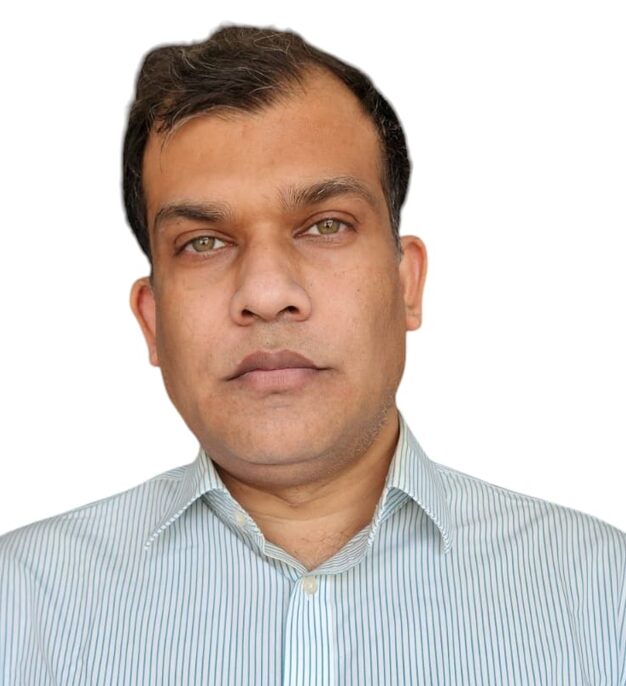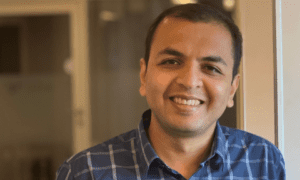Alok Chakraborty is a seasoned IT project management professional with over 22 years of experience in consulting. He has worked with top global firms—consulting at IBM and Deloitte and leading major IT initiatives for consumer goods giants like Coca-Cola, Solventum and PepsiCo. Over his career, Alok has specialized in large-scale Enterprise Resource Planning (ERP) and SAP software implementations, often in leadership roles that demanded orchestrating complex technical projects and managing multidisciplinary teams.
This deep background has honed his expertise in guiding high-stakes projects from inception to successful delivery. “The PMP methodology serves as a guiding framework for ERP implementations, ensuring projects are meticulously planned and executed to meet business objectives, remain within budget, and adhere to timelines,” Alok explains. “A key aspect of this framework is risk management, which is especially critical in ERP projects due to challenges like data migration, system integrations, and user adoption. I apply proactive risk identification and mitigation strategies to resolve potential issues before they escalate,” he adds.
Effective project management methodologies are recognized as critical factors in success. Organizations increasingly emphasize structured approaches—from formal certifications like Project Management Professional (PMP) to adaptive frameworks like Agile and traditional Waterfall planning—to mitigate risks and deliver results. Research shows that projects implementing recognized project management best practices are 2.5 times more successful than those that don’t. Likewise, Agile methods have surged in popularity; about 60% of project leaders and solution architects employ a Hybrid Agile-Waterfall approach in their work.
“By applying my PMP expertise, I can offer strong oversight and structure throughout the ERP implementation process,” Alok notes. “I identify potential risks early, address them proactively, and keep the project on track, minimizing disruptions. This approach significantly boosts the likelihood of delivering the ERP system on time, within budget, and with the desired outcomes, ultimately enhancing the organization’s operational efficiency and success,” he continues.
Within this context, Alok’s extensive experience and credentials position him at the forefront of driving IT project success through structured yet adaptable management practices.

Alok Chakraborty
Project management that drives ERP success
Alok is a certified Project Management Professional (PMP), a globally recognized credential that reflects his deep commitment to excellence in project leadership. This certification underpins his disciplined approach to managing projects, especially large ERP system rollouts. “Resource allocation is another crucial component, particularly in ERP implementations that involve multiple departments and teams,” Alok explains. “I leverage PMP techniques to optimize resources, ensuring the right people with the appropriate expertise are assigned to key tasks while balancing workloads throughout the project,” he shares. This structured mindset is well-founded: industry analysis estimates that 55–75% of ERP projects fail to meet their objectives, often due to poor planning or oversight.
By adhering to proven project management processes, Alok significantly improves the odds of ERP initiatives delivering the intended business value rather than becoming another statistic of mismanaged IT projects. He applies PMP’s rigorous frameworks to ensure thorough planning, risk management, and quality control across all stages of implementation. “Equally important is stakeholder communication. I prioritize providing regular updates and ensuring that all stakeholders—ranging from business leaders to external vendors—are aligned and informed. This continuous communication fosters quick issue resolution and keeps everyone engaged in the project’s progress.”
Complex IT project execution with Agile methodologies
In addition to formal PMI methods, Alok is highly adept with Agile practices, which he leverages to execute complex IT projects. Agile methodology allows for iterative development, continuous feedback, and quick adaptation—all crucial when managing large, evolving technology programs. “A challenge I faced was balancing the addition of new features with the team’s capacity to maintain quality,” Alok recalls. “Backlog grooming helped us continuously assess priorities, while sprint planning ensured we focused on the most important deliverables. Daily stand-ups allowed the team to identify blockers early, ensuring smooth progress,” he explains. The value of this adaptive approach is backed by industry data: Agile-led projects achieve roughly a 64% success rate, and are about 28% more successful than projects using only traditional methods.
By embracing Agile, Alok ensures that even in high-complexity projects, issues surface early, and teams can course-correct, resulting in more predictable and resilient project outcomes. He tailors sprints to deliver functionality in smaller increments, soliciting user feedback and adjusting priorities as requirements evolve.“Close collaboration with business users was essential, and Agile made it easy to adapt to their feedback after each sprint,” he notes. “For instance, after one sprint review, we realized significant changes were needed to the user interface based on sales team input. This flexibility to pivot was one of Agile’s biggest advantages,” Alok adds.
Choosing between Agile and Waterfall methodologies
The sequential phases of a classic Waterfall model (Requirements → Design → Implementation → Verification → Maintenance) contrast with the iterative cycles of Agile development. Alok carefully evaluates each project’s needs before committing to a methodology. “Agile works in iterative cycles (sprints), delivering functional increments that can be reviewed and improved upon after each cycle,” he explains. “This allows continuous progress and quick adjustments. Waterfall follows a sequential process with distinct phases, such as requirements, design, development, testing, and deployment,” Alok clarifies.Studies find Agile methods tend to yield higher success rates (around 64%) than Waterfall (49%), highlighting the inherent flexibility of iterative development.
He recognizes that different projects call for different approaches: some benefit from Waterfall’s upfront planning and linear structure, whereas others thrive on Agile’s adaptability. “Ultimately, the choice of methodology depends on the project’s complexity, flexibility, and certainty,” Alok emphasizes. “In some cases, a hybrid approach combining both Agile and Waterfall may be the best option to address different project needs,” he adds.At the same time, many organizations blend the two, an approach often referred to as hybrid project management. Alok’s fluency in both methodologies allows him to tailor his strategy to fit project demands, ensuring structure when it’s needed and agility when it matters most.
Managing complex supply chain processes
Supply chain processes are becoming increasingly complex. As an expert in supply chain process knowledge, one must have a comprehensive understanding of the intricate systems and strategies that facilitate the movement of goods and services from suppliers to customers. This expertise spans logistics, inventory management, procurement, and distribution, ensuring that every step in the supply chain is optimized for efficiency and cost-effectiveness. Alok has successfully worked on numerous projects across all key areas of the supply chain, making him well-equipped to manage complex supply chains. He emphasizes, “Adaptability is crucial in the ever-evolving IT industry, so I stay informed about emerging trends to adjust my strategies accordingly. I also bring strong technical expertise in supply chain processes, backed by several SAP certifications.” Alok’s vast experience positions him ahead of his peers, placing him in a unique position to tackle even the most challenging supply chain scenarios.
Navigating global team management challenges
Leading complex IT projects often means leading global teams spread across different countries and time zones—a challenge Alok has navigated throughout his career. He has managed project teams across North America, Europe, and Asia, coordinating efforts around the clock. “To minimize misunderstandings, I emphasize concise communication and use visual aids to support explanations,” Alok explains. “Regular check-ins and feedback ensure alignment and address confusion promptly. By focusing on clear communication, flexibility, and leveraging technology, I ensure successful project delivery in global team environments,” he adds.
This skill is increasingly vital as modern workplaces become more globally connected—one survey noted that participation in global teams grew from 64% in 2010 to 89% by 2018, meaning most professionals now collaborate with colleagues from multiple cultures. By proactively addressing language gaps, holiday differences, and varying work styles, Alok ensures that geographic dispersion never derails project unity or progress.
His emphasis on respecting cultural differences and scheduling overlapping work hours helps build trust and cohesion. By proactively addressing language gaps, holiday differences, and varied work styles, Alok ensures that geographic dispersion never derails project unity or progress. “I foster an inclusive environment by respecting cultural differences and encouraging diverse perspectives, which enhances creativity and strengthens the team’s problem-solving ability,” Alok shares. “Establishing clear project goals and expectations ensures accountability, while transparent reporting keeps everyone aligned on progress and risks,” Alok continues.This approach has proven critical in maintaining momentum and synergy among distributed teams.
Effective tools and strategies for project oversight
Effective oversight of complex projects requires the right tools and strategies to monitor progress and keep everyone aligned. Alok is a proponent of leveraging modern project management software and collaboration platforms to achieve this. “I use Jira to track tasks, deadlines, and milestones,” he explains. “For detailed planning, Microsoft Project helps visualize timelines and manage resources. I maintain a risk register to identify, assess, and prioritize risks, conducting regular reviews to mitigate emerging issues,” Alok adds.The use of such tools is widespread and for good reason: adopting dedicated project management software can improve team communication by over 50%.
In Alok’s experience, dashboards and real-time status updates from these platforms allow him to spot risks early and adjust plans proactively. This approach directly addresses one of the major causes of project failure—poor communication. “Slack and Teams facilitate fast communication and collaboration,” he notes. “By using these strategies and tools, I ensure projects stay on track and deliver successful results,” Alok emphasizes.By combining the right technological solutions with regular status meetings and progress reviews, Alok maintains tight oversight on deliverables while empowering his teams to stay self-organized and efficient.
Overcoming unexpected setbacks in project execution
Even with meticulous planning, unexpected setbacks can occur in any project—ranging from delayed data migration to unforeseen technical hiccups. Alok’s leadership is defined by his calm, structured response. “I quickly gathered stakeholders to assess the issue and identified that data integrity needed improvement,” he recalls. “I reallocated resources and worked with the team to develop a new migration strategy. Using my risk management skills, I reassessed the timeline, identified new risks, and set realistic milestones,” Alok explains.This flexibility and problem-solving mindset directly tackle one of the leading causes of project failure—changing priorities or requirements.
When scope or circumstances shift midstream, Alok re-plans sprints, adjusts timelines, or redistributes resources to keep the project on track. He emphasizes transparency, ensuring that stakeholders remain informed of any changes or new risks. “I refocused the team by prioritizing critical tasks and keeping everyone aligned with the overall objectives,” he shares. “Through frequent check-ins, we maintained motivation and ensured smooth progress. With this approach, we recovered lost time, completed data migration, and successfully launched the SAP system on a revised schedule,” Alok adds.His ability to guide teams through adversity minimizes the impact of setbacks and often turns potential crises into manageable challenges.
Fostering collaboration and sustaining team morale
Alok understands that successful project management is as much about people as it is about processes. Large IT projects can be stressful, and maintaining team morale and collaboration is crucial for long-term success. “Ownership means empowering team members with autonomy, which fosters accountability and deeper investment in the project,” he explains. “Promoting work-life balance through flexible schedules and breaks helps prevent burnout. And when it comes to addressing issues, resolving conflicts early is key to maintaining a positive team dynamic,” Alok adds.By fostering a supportive and open environment, he mitigates burnout and conflict—common risks in high-pressure IT projects.
He frequently encourages collaboration through team workshops, stand-up meetings, and an open-door policy for ideas and concerns. This leadership style aligns with broader workplace findings indicating that effective communication can greatly improve productivity. “Emphasizing the bigger picture keeps the team aligned and focused on shared goals,” Alok notes. “Providing growth opportunities through challenging tasks and mentorship not only supports personal development but also strengthens overall team capability,” he continues.By celebrating milestones, recognizing achievements, and encouraging skill development, Alok sustains a high level of engagement on his teams, which translates to better problem-solving, innovation, and overall project performance.
Essential qualities of a successful IT project leader
Having led numerous projects to completion, Alok has clear views on the qualities that make an IT project leader effective. In his experience, technical knowledge must be coupled with strong leadership and soft skills. “Effective communication is crucial in managing complex projects, so I prioritize regular updates and maintain open dialogue with team members, stakeholders, and clients,” he emphasizes. “When faced with challenges, I take a proactive approach to problem-solving, encouraging team input to find the best solutions. Adaptability is essential in the dynamic IT industry, so I stay updated on trends to adjust strategies accordingly,” Alok adds.This perspective is echoed across the industry. In one recent survey, 61% of organizations said leadership and communication are the top skills they seek when hiring project leaders, underscoring that a project’s success often hinges on the human touch as much as the technical execution.
Alok pairs an in-depth understanding of ERP/SAP systems with an ability to rally teams around common goals. His background is bolstered by multiple SAP certifications, along with years of overseas consulting experience. “Time and resource management are key to my success, utilizing tools and frameworks to ensure on-time delivery. These skills have been crucial in overcoming obstacles and delivering successful IT projects,” Alok explains.By continuously developing these competencies in himself and mentoring them in his teams, he exemplifies the well-rounded project leader who can effectively bridge the gap between technology and business outcomes.
Alok stands out as a seasoned IT project leader who marries rigorous, structured methodologies with adaptable leadership. Whether orchestrating a multi-national SAP implementation or guiding an Agile software development team, he brings a balanced approach that consistently drives projects to successful completion. His 22 years of experience—bolstered by professional certifications and enriched by hands-on challenges—have equipped him to foresee pitfalls and steer complex initiatives toward their goals. By focusing equally on process and people, Alok not only meets technical deliverables but also builds high-performing teams and stakeholder confidence. In an industry where large projects often falter, his track record of delivering on time and on target showcases the value of having a skilled, methodology-driven leader at the helm of IT implementations.


































